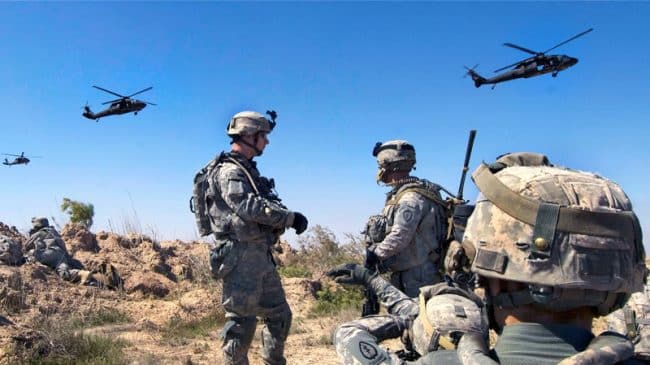Sen. Bill Nelson (R, FL), an ideological opponent of converting the FAA’s struggling Air Traffic Organization into a de-politicized, self-supporting ATC Corporation, has come up with a new argument against making this needed reform: “the Defense Department will never go for it.” This is despite the fact that DoD has not voiced any opposition to the bill approved earlier this year by the House Transportation & Infrastructure Committee.
The Defense Department, to be sure, is a significant player in air traffic control. It operates 235 airports and heliports, shares 29 military airports with local governments (e.g., Albuquerque), and is a shared user (with active-duty military units) at three civil airports. As an ATC provider, DoD manages about 16% of U.S. airspace, employs over 8,000 air traffic controllers in one en-route center and 168 control towers, and maintains 438 navigational aids and 1,600 instrument approach procedures.
The House proposal to convert the ATO into the ATC Corporation provides continuity with this civil/military status quo. DoD personnel would continue to sit side-by-side with ATC Corporation personnel at the ATC System Command Center and other major facilities, just as they do today. Existing lines of communication for both day-to-day operations and national emergencies would also continue. The legislation also provides that in time of war, the President may temporarily transfer control over aspects of the ATC system to DoD, just as at present. A DoD member would occupy one of the seats on the new corporation’s Advisory Board.
Nelson’s argument seems to be aimed at people who have no idea about the wave of reform in ATC provision that’s been under way worldwide since 1987. Since that date, more than 60 countries have converted their ATC systems from a government agency to a self-supporting corporate body supported by fees and charges. And guess what: every one of these 60 countries has a defense department that flies aircraft in the country’s airspace!
Civil/military cooperation is standard practice worldwide, with little fuss or bother. And civil/military collaboration in some countries goes well beyond what exists here. For example:
- Australia is under way on a major effort to implement a single civil/military ATC software system called OneSKY, to replace both corporatized Airservices Australia’s current Australian Advanced Air Traffic System (AAATS) and the current military system. Defence and Airservices are jointly funding and managing procurement of the new system. It will be phased in from 2018 to 2021.
- Belgium might be the second country to merge civil and military ATC. Belgium’s corporatized provider BelgoControl and the military’s Belgian Air Component launched a joint study effort last year to explore full integration of the two systems, including the development of a business case.
- The UK’s for-profit NATS has a close working relationship with Defence Airspace and Air Traffic Management. At NATS’ Swanwick London Area and Terminal Control Center, military air traffic staffers are embedded throughout the operation.
Every year, the U.S. Air Traffic Control Association (ATCA) hosts a global conference on civil/military ATC, with two days of presentations, workshops, and exhibits. The U.S. military ATC people who participate network with their counterparts from Australia, Canada, and Europe and people from those countries’ ATC corporations.
In short, active cooperation between ATC corporations and military ATC is well-established globally. In negotiating the final version of a corporatization bill, DoD will need to be involved, to ensure a smooth transition and a continuation of the long-standing cooperation between civil and military air traffic control.

